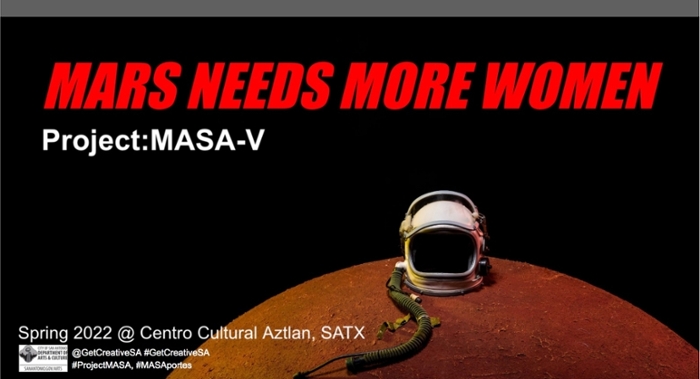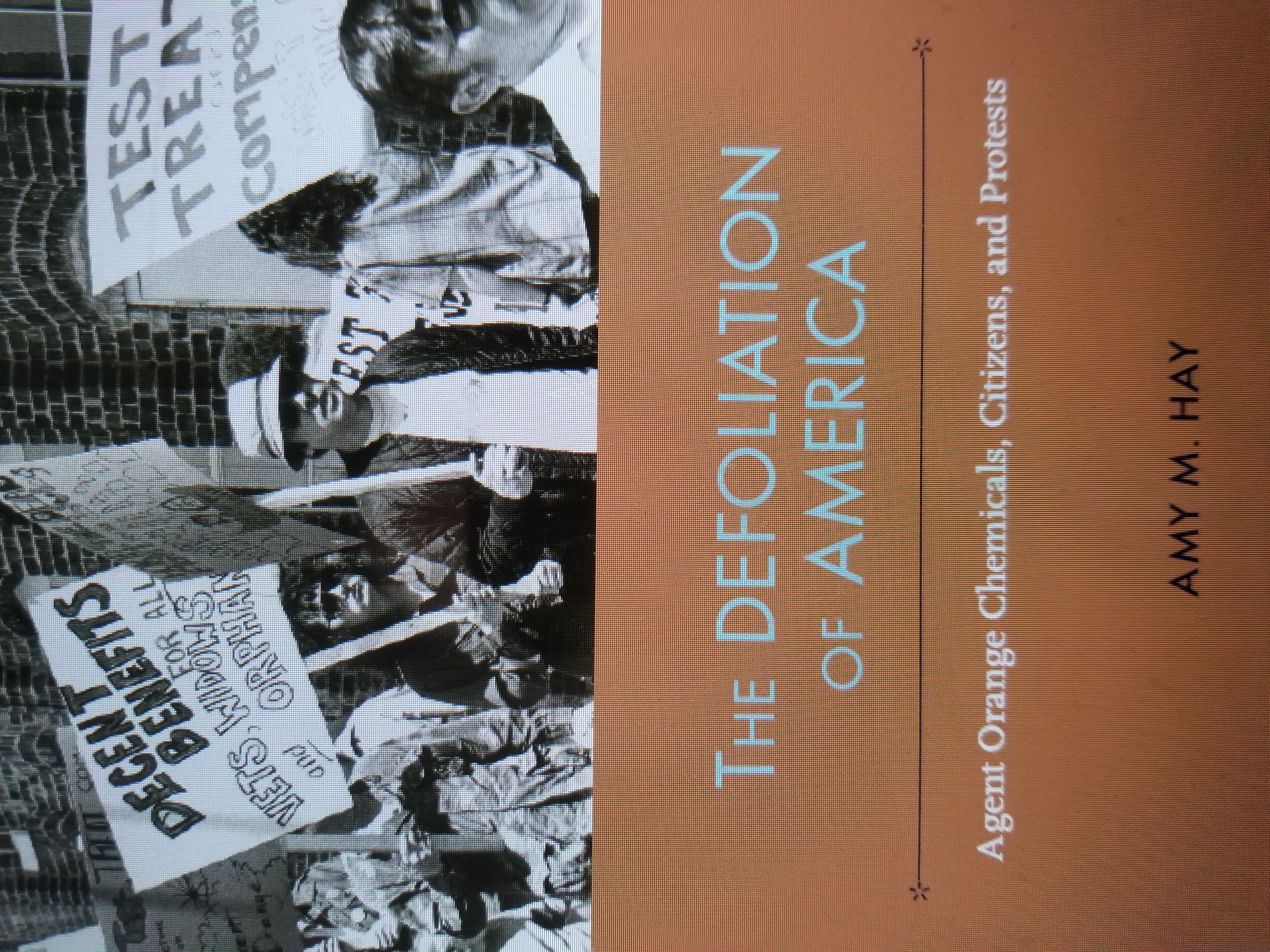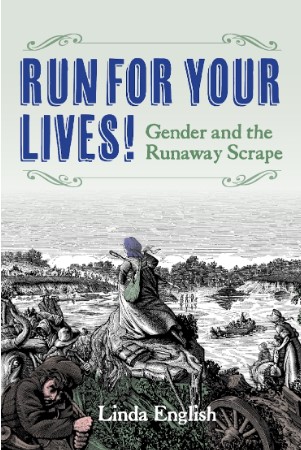About Gender & Women's Studies at UTRGV
UTRGV's Gender & Women’s Studies Program (GWSP) provides inclusive learning environments to advance interdisciplinary scholarship, teaching, and community engagement that analyze and transform the dynamics of gender, sexuality, and other intersectional categories of difference. By placing women, gender, and sexuality at the center of our research and teaching, the GWSP expands our understandings of diverse human experiences as well as promotes global justice and more equitable futures. The Program cultivates students’ critical thinking skills to succeed in a broad spectrum of careers and fosters social awareness attuned to the culturally rich region of the Rio Grande Valley, the U.S.-Mexico borderlands, and beyond.
The Gender and Women’s Studies Program (GWSP) at UTRGV enables you to examine critically the intersection of gender with race, ethnicity, class, age, and sexualities. It will make you aware of how the construction of gender and sexualities relate to the creation of social hierarchies. As you will see from this list—which is by no means exhaustive—this knowledge and awareness is important beyond your college career.
Health Care
So you want to work in health care? Students pursuing careers in medicine and caregiving will benefit from a GWSP minor/certificate by developing a deeper understanding of health care needs for people with diverse gender and sexual identities. GWSP courses will equip you with an array of cultural competencies designed to help health care professionals provide patients and clients with informed, personalized services.
Law and Criminal Justice
So you want to be in law enforcement? A GWSP minor/certificate uniquely prepares aspiring officers of the law to maneuver the situational complexities of everyday interactions related to gender and sexuality. Sensitivity to inclusivity and knowledge of structural inequalities within the law and the broader justice system, especially with regard to gender and LBGTQ+ issues, better qualifies you to interact with complicated, yet commonplace, social situations.
Education
So you want to be a teacher? It is vital that pre-K as well as primary and secondary teachers and educators are cognizant of how gender biases, stereotypes, and prejudices affect their pedagogy in order to create more inclusive and equitable learning environments. The GWSP minor/certificate enables educators to understand the diverse spectrum of gender expressions and sexualities and respond to the needs and experiences of children and young adults, instilling awareness and acceptance.
Business
So you want to work in business? Students who pursue a GWSP minor/certificate will possess the knowledge and skills necessary to successfully navigate increasingly complex workplace environments. By learning how to communicate with a knowledge of and sensitivity to issues of gender and sexuality, you will be better prepared to meet the needs of diverse consumers and clientele.
Social Work
So you want to be a social work professional? Expertise in the field of gender, women’s, and sexuality studies enables you to recognize social hierarchies and oppression that permeate our daily lives and shape institutions active in the fields of child care and other social support programs. The GWSP minor/certificate helps you to identify and eliminate barriers to equality that challenge your clients.
Advertising and PR
So you want to be in advertising and public relations? Serving as a bridge between your clients and the public, you will need to have a comprehensive awareness of the social world and the complex relationships that structure it. A GWSP minor/certificate will empower you with the knowledge and sensitivity about gender and sexuality necessary to reach and appeal to a diverse audience and sophisticated consumers.
Journalism
So you want to be a journalist? As you examine and report on world events, a GWSP minor/certificate will provide you with wide-ranging knowledge to communicate the nuances of gender diversity and inclusivity in broad contexts. In order to serve as cultural interpreters across media platforms, it is critical that you cultivate a depth of understanding and sensitivity to issues of gender, sexuality, and other categories of difference.

Achievements 2024
Dr. Friederike Bruehoefener published, “A Green Celebrity: The Newspaper Coverage of Petra Kelly in the early 1980s,” in Milder, Stephen, Andreas Jünger, Katharina Scharf, Amanda M. Nichols, Friederike Bruehoefener, and Adam Stone, “Petra Kelly: Life and Legacy of a Transnational Green Activist.” Environment & Society Portal, Virtual Exhibitions 2024, no. 1. Rachel Carson Center for Environment and Society, https://www.environmentandsociety.org/node/9772
Dr. Amy Hays is an air consultant for the documentatry, Poisoned Ground: The Tragedy At Love Canal, on PBS which tells the dramatic and inspiring story of the ordinary women who fougt against overwhelming odds for the health and safety of their families. In the late 1970s, residents of Love Canal, a working-class neighborhood in Niagara Falls, New York, discovered that their homes, schools and playgrounds were built on top of a former chemical waste dump, which was now leaking toxic substances and wreaking havoc on their health. Through interviews with many of the extraordinary housewives turned activists, the film shows how they effectively challenged those in power, forced America to reckon with the human cost of unregulated industry, and created a grassroots movement that galvanized the landmark Superfund Bill.
Dr. Linda English published a book, Run for your Lives! (Texas A&M University Press, 2024). While shelves of books examine the fall of the Alamo and the revolutionary victory at San Jacinto, surprisingly little sustained attention has been given to the chaotic period from the early to late spring of 1836 when many settlers fled their homes in the face of Santa Anna’s advancing forces. In the final months of the rebellion-turned-revolution, fear of defeat prompted larger questions of what it meant to be a man or woman in an environment of wartime retreat. In Run for Your Lives! historian Linda English opens a new window into the Runaway Scrape, exploring the events and rhetoric through the lens of gender.
Dr. Megan Birk was featured in USA Today on the era of "practice babies".
Achievements 2023
Dr. Amie Bostic published a GWSP related paper: Bostic, A. (2023). Family, Work, Economy, or Social Policy: Examining Poverty Among Children of Single Mothers in Affluent Democracies Between 1985 and 2016. Population Research and Policy Review, 42(4), 59.
Dr. Mariana Alessandri published a book, Night Vision: Seeing Ourselves through Dark Moods. Princeton University Press, 2023.
Achievements 2022
Belinda Davis, Stephen Milder, Friederike Bruehoefener, eds., Rethinking Social Movements after ’68: Selves and Solidarities in West Germany and Beyond (Oxford and New York: Berghahn Books, 2022).
Dr. Cathryn Merla-Watson published the chapter "Virginia Grise, blu: Queer Latinx Aesthetics of the Apocalypse" in Uneven Futures: Strategies for Community Survival from Speculative Fiction (MIT Press, 2022)
Dr. Sarah Perez published the article "Teaching Asian Pacific American Politics at an HSI: Reflections on Lessons Learned and Unexpected Conclusions" in the Journal of Political Science Education in April of 2022
Dr. Cathryn Merla-Watson co-curated the Latinafuturist art exhibit Mars Need More Women at the historic Centro Cultural Aztlán in San Antonio, Texas (March 24, 2022-June 10, 2022).
Dr. Erika R. Rendon-Ramos published the article “Voces De Mujeres: Migration, Family, & Identity through the Voices of Mexican Women” in Contemporary Medusa: International Journal of Interdisciplinary Gender Studies 3 in July of 2022.
Dr. Alejandra Ramírez published a chapter entitled “Perpetual (In)securities: (Re)Birthing Border Imperialism as Understood Through Facultades Serpentinas” in Decolonial Conversations in Posthuman and New Material Rhetorics (2022), edited by Jennifer Clary-Lemon and David M Grant.
Achievements 2021

Dr. Amy Hay published a book, "The Defoliation of America: Agent Orange Chemicals, Citizens, and Protests" (University of Alabama Press, 2021). In the book, Amy M. Hay profiles the attitudes, understandings, and motivations of grassroots activists who rose to fight the use of phenoxy herbicides, or Agent Orange chemicals as they are commonly known, in various aspects of American life during the post-WWII era. Hay focuses her analysis on citizen responses to illuminate how regulatory policies were understood, challenged, and negotiated, contributing to a growing body of research on chemical regulatory policies, risk society, and hazardous chemicals. This volume uncovers new understandings about the authority of the state and its obligation to society, the role of scientific authority and expertise, and the protests made by various groups of citizens.
Dr. Brent M. S. Campney published an article, "Police Brutality and Mexican American Families in Texas, 1945-1980," in the March 2021 issue of The ANNALS of the American Academy of Political and Social Science, entitled "Legacies of Racial Violence: Clarifying and Addressing the Presence of the Past."
Definitions for Inclusivity
This quick reference guide—though far from complete— reflects the efforts of UTRGV’s Gender and Women’s Studies Program to promote equality and social justice in all form. Seeking to foster awareness and appreciation of the diversity of human life, we hope that this list provides students, faculty, and staff with some basic knowledge, concepts, and definitions. We believe that education, understanding, and encouraging empathic responses to social change is a crucial step towards fostering a unified and safe campus atmosphere at UTRGV.
We thank Dr. Jen Lynn and the Women’s and Gender Studies Center at Montana State University Billings for allowing us to use and build on their “Definitions for Inclusivity.”Terms Related to Sex and Gender
Sex refers to a person’s biological status and is typically categorized as male, female, or intersex (i.e., atypical combinations of features that usually distinguish male from female). There are a number of indicators of biological sex, including sex chromosomes, gonads, internal reproductive organs, and external genitalia.
Gender refers to the attitudes, feelings, and behaviors that a given culture associates with a person’s biological sex. Behavior that is compatible with cultural expectations is referred to as gender-normative; behaviors that are viewed as incompatible with these expectations constitute gender non-conformity.
Gender identity refers to one’s innermost concept of self as male, female, a blend of both or neither – how individuals perceive themselves and what they call themselves. One’s gender identity can be the same or different from their sex assigned at birth. Gender expression refers to the external appearance of one’s gender identity, usually expressed through behavior, clothing, haircut, and/or voice, and which may or may not conform to socially defined behaviors and characteristics typically associated with being either masculine or feminine.
Gender transition is the process by which some people strive to more closely align their internal knowledge of gender with its outward appearance. Some people socially transition, whereby they might begin dressing, using names and pronouns and/or be socially recognized as another gender. Others undergo physical transitions in which they modify their bodies through medical interventions.
Cisgender is a term used to denote a person who by nature or by choice conforms to gender/sex based expectations of society.
Gender dysphoriais clinically significant distress caused when a person’s assigned birth gender is not the same as the one with which they identify. According to the American Psychiatric Association’s (APA) Diagnostic and Statistical Manual of Mental Disorders (DSM-5), the term – which replaces Gender Identity Disorder – “is intended to better characterize the experiences of affected children, adolescents, and adults.”
Genderqueer is a person whose gender identity is neither man nor woman, is between or beyond genders, or is some combination of genders. This identity is usually related to or in reaction to the social constructions of gender, gender stereotypes, and the gender binary system. Some genderqueer people identify under the transgender umbrella while others do not.
Intersex is a set of medical conditions that feature congenital anomaly of the reproductive and sexual system. That is, intersex people are born with “sex chromosomes,” external genitalia, or internal reproductive systems that are not considered “standard” for either male or female. The existence of intersexuals shows that there are not just two sexes and that our ways of thinking about sex (trying to force everyone to fit into either themale box or the female box) is socially constructed.
MTF/FTM are abbreviations for male-to-female and female-to-male, and is a simple way to tell others that an individual is currently transitioning genders.Transgender is an umbrella term for people whose gender identity and/or expression is different from cultural expectations based on the sex they were assigned at birth. Being transgender does not imply any specific sexual orientation. Therefore, transgender people may identify as straight, gay, lesbian, bisexual, etc.
Transsexual refers to a person who experiences a mismatch of the sex they were born as and the sex they identify with. A transsexual sometimes undergoes medical treatment to change his/her physical sex to match his/her sex identity through hormone treatments and/or surgically. Not all transsexuals can have or desire surgery.
Two-spirit is a term used by Native American persons who have attributes of both men and women, have distinct gender and social roles in their tribes, and are often involved with mystical rituals. Their dress is usually a mixture of men’s and women’s articles and they are seen as separate or third gender. The term “two-spirit” is usually considered to be specific to certain tribes. Similar identity labels vary, including “one-spirit,” “wintke,” and “third gender.”
Chicanx is a gender-inclusive term used to refer to a Mexican American person. This term has been adopted by people of Mexican origin living in the United States as a symbol of pride and political activism.
Latinx inclusively encompasses the diverse gender and sexual identities of young people of conventionally Latino/a descent as a way to deconstruct the gender binary of the Spanish language.
Terms Related to Sexuality
Sexual orientation refers to an immutable, enduring, emotional, romantic, and sexual attraction to other people, either of the same sex or gender, or the opposite sex or gender. While these categories continue to be widely used, research suggests that sexual orientation does not always appear in such definable categories and instead occurs on a continuum in constant flux, i.e. no individual is 100% homosexual or 100% heterosexual.
Heterosexuality refers to a person whose sexual interest rests in members of the opposite sex or gender.
Homosexuality refers to a person whose sexual interest rests in members of the same sex or gender.
Asexual is a person who is not sexually attracted to any sex or gender.
Gay is a term used for persons who are men/male and are attracted to other men/males.
Lesbian is a term used for persons who are women/female and are attracted to other women/females.
Bisexual is a person who is attracted to two sexes or two genders, but not necessarily simultaneously or equally.
Pansexual is a person who is fluid in sexual orientation and/or gender or sex identity.
LGBTIQ+ is an acronym that attempts to include all communities of gender and sexual minorities. Lesbian, Gay, Bisexual, Transgender, Intersex, Queer, etc.
Queer is recently used as an umbrella term to refer to all LGBTIQ+ people. It is used as a political statement, as well as a sexual orientation, which advocates breaking binary thinking and seeing both sexual orientation and gender identity as potentially fluid. A simple label to explain a complex set of sexual behaviors and desires, e.g. a person who is attracted to multiple genders may identify as queer. Many older LGBTIQ+ people feel the word has been hatefully used against them for too long and are reluctant to embrace it, though younger generations find empowerment in a formally negative identifier.
Queer of Color is an umbrella term used to refer to a community of people who fall outside of White, heteronormative, cisgender societal norms and embody more expansive, intersecting identities across gender, sexuality and race/ethnicity. The term “queer” has also been reclaimed from its historical roots as a derogatory term to politically empower gender and sexual minority populations.
Jota/Joto/Jotx refers to a self-label (or externally imposed) of Queer Latinxs that can be applied in feminine (jota), masculine (joto) and gender-expansive (jotx) forms. Historically, this term and its derivatives have been used as pejoratives against gender and sexual minorities, but more contemporary movements have reclaimed it as a source of empowerment and political activism.
Jotería is a broader term that can be used as a noun (see Jota/Joto/Jotx) or an adjective to embody cultural and social justice support for queer Latinx people.
MSM, or men who have sex with men, are men who engage in same-sex sexual behaviors, but who may not necessarily identify as gay or bisexual.

